Вы здесь
Astana-baba mausoleum.
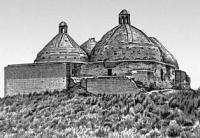
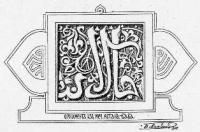
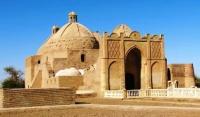
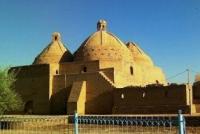
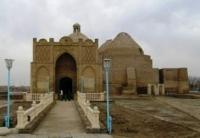
Tours on monuments of Lebap Region.
"Locals believe that the mausoleum is the place of burial of a standard bearer of the Prophet. While there is no efinitive answer as to the figure for whom the mausoleum was built, written sources record that the last Samanid ruler, Abu Ibrahim Ismail Muntazir, was killed in this general area in 1004"
Trip to mausoleum Astana baba in Lebap Region.
The Astana-baba mausoleum is located at an altitude of 239 meters above sea level, located in the southeastern part of the Eastern Karakum sands, 4.3 kilometers southwest of the left (western) bank of the Amu Darya River, on the western outskirts of the Akmeidan village, at 11, 6 kilometers north-west of the city of Atamurat, 27.7 kilometers south-east of the village of Khalach in the Kerkinsky etrap of the Lebap velayat.
The mausoleum of Astana-baba, original and complex in composition, is located in Kerkinsky. The region of the Lebap velayat. Among the local population, it is called differently: the Astana-baba mausoleum, the mausoleum of the Zeid-Ali and Zuweid-Ali brothers, the Kyzlyar-bibi mausoleum (their wives).
The mausoleum of Astana-baba belongs to the XII - XVI centuries. It is a building made of flat mud bricks and consists of four halls, which, apparently, were erected as new burials appeared. In one of them, empty, prayer rugs are spread; there is a prayer hall here.
The other three are the graves of saints. In one of them, where there are two graves, there are signs with the inscriptions "Zeid-Ali" and "Zubeid-Ali". Such a legend tells about the appearance of one of them. The ruler of Khorasan had a daughter named Zubeida. He married her to one of the local rulers, but soon after the wedding, the young woman died.
Father ordered to build a luxurious mausoleum on the site of her repose, but immediately after the completion of the work, the building collapsed. The tomb was rebuilt two more times, but the result was the same. Finally, an elder came to his father in a dream and advised him to build a mausoleum using water and clay from Mecca.
And after the clay brought from the shrine of all Muslims was added to the local clay, and water from Mecca was poured into the well, the mausoleum stood and stands to this day. The water in the well, which has survived to this day, is considered healing.
And this place itself is popular with pilgrims precisely as a cure for diseases. There is also a number of legends in which the mausoleum is called either the mausoleum of Khazret-Shahi-Maitsan ("Saint from the Shah's Square"), or the mausoleum of the daughter of Khazret ibn Ali Nur-oglu.
“Four hundred years ago,” the legend says, “the only daughter of the ruler of Balkh ibn Ali Nurogly Zuweyts, married to a local prince, died unexpectedly. The saddened father ordered the best craftsmen from Merv and Samarkand and ordered to build a mausoleum for her.
However, upon completion of construction, the mazar collapsed, the newly erected building suffered the same fate, and this was repeated three times. Nur-oglu fell into despair, but somehow in a dream an old man appeared to him and advised him to build a mausoleum of clay and water brought from Mecca.
The inconsolable father did just that. The earth brought from Mecca was mixed with clay, and the water from Mecca was poured into a well, from where it was drawn for construction. The mausoleum did not collapse anymore, and after Nur-oglu's death his body was buried in the same room, in a room adjacent to his daughter's tomb."
In the ensemble of the Astana-baba mazar, attention is drawn to an unusual grouping of four domed volumes, united into one system by entrance structures. The existing complex consists of several parts: an open corridor (dromos), a courtyard, a portal, a covered corridor, a four-pylon hall, a mosque, the tomb of Zeid-Ali and Zuweyts-Api, divana-khan and a narrow corridor connecting with the Kizpyar-bibi mausoleum.
The mosque is the oldest part of the ensemble and can be dated back to the XIIth century. Its walls are lined with baked bricks. Divana Khan appeared at the same time as the mosque. The Kizlyar-bibi mausoleum is a later part of the ensemble, built of bricks of different sizes, apparently reused.
The portal dates back to the XIXth century. The space above the door is faced with carved terracotta tiles of different times (XII - XIV centuries).
Geographic coordinates of the architectural complex Astana Baba: N37 ° 54'23.69 "E65 ° 06'34.65"
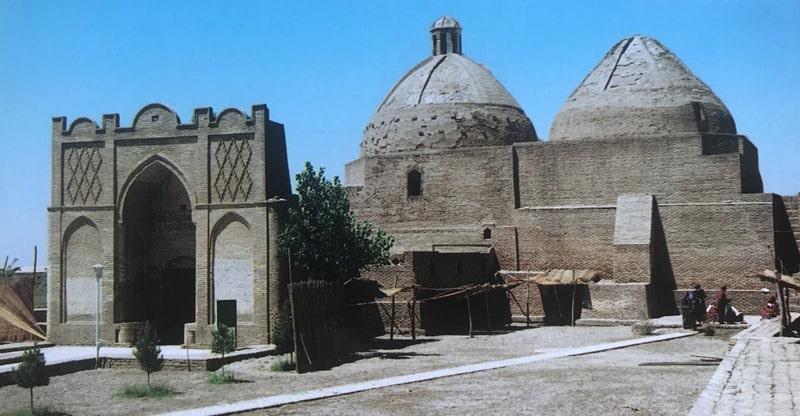
Authoruty:
Based on materials from the information department of the State Committee of Turkmenistan for Tourism and Sports.
"Religious and Spiritual Monuments of Central Asia". Author M. Khashimov. Saga Publishing House, 2001







